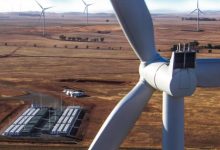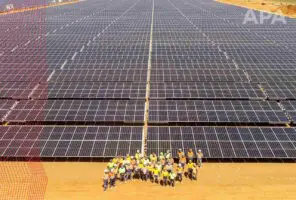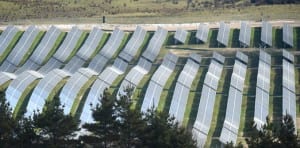Wind farm operators Pacific Hydro and Neoen have agreed to pay fines totalling $1.65 million under a legal settlement to action brought against them by the Australian Energy Regulator after the dramatic state-wide blackout in South Australia in 2016.
The two wind energy companies opted to settle the legal proceedings after conceding there had been breaches of the National Electricity Rules relating to low voltage ride through settings at Pacific Hydro’s Clements Gap wind farm and Neoen’s Hornsdale wind farm.
The two companies agreed that they had failed to seek written approval from the Australian Energy Market Operator for their settings – but other contraventions alleged by the AER were withdrawn.
Importantly, this included the effective withdrawal of the regulator’s assertion that the breaches were a “contributing cause” to the black out.
Under performance standards lodged with energy market regulators, the wind farms were required to maintain the operation of their turbines across a certain number of voltage disturbances before the turbine’s safety systems intervened to shut it down.
Regulators alleged that six wind farms operated by Pacific Hydro, Neoen, AGL Energy and Tilt Renewables had an unapproved set of protection settings that saw their shut down protections kick in sooner than expected in the dramatic events of that day, resulting in an unanticipated cut to output.
The AER, which brought legal proceedings against the four wind farm operators, said that the settlement – that included a $1.1 million fine to Pacific Hydro and $550,000 to Neoen – showed the importance of generators obtaining necessary written approvals for changes in operational settings.
“As we become increasingly reliant on new forms of generation with different technical characteristics, it is more important than ever that all generators comply with the rules so households and businesses can keep the lights on,” AER chair Clare Savage said in a statement.
“It is paramount that generators obtain written approval for system settings on their generating units from the Australian Energy Market Operator (AEMO) to ensure power system security and the effective operation of the wholesale energy market.”
In the lead up to the 2016 South Australian blackout, extreme weather events had caused severe damage to power lines throughout the state, bring down multiple towers and three main transmission lines, which caused voltage disturbances to ripple throughout the grid.
Unbeknown to market operator AEMO, these disturbances triggered protection settings in a number of South Australian wind turbines, causing them to go offline when they were otherwise expected to remain operational.
When the loss of generation from the wind farms were combined with the impacts of downed power lines, and the South Australian grid became unstable, triggering a system black event and leaving around 850,000 homes and businesses without power.
The AER has previously criticised the market operator for a failure to prepare for the anticipated storms, and for committing five breaches. In a 2018 report it said AEMO had failed to take “all reasonable steps” to keep itself informed of the impending storm, and to advise market participants.
AEMO now takes a much more cautious approach in similar circumstances, including dialling down the amount of electricity being transferred on inter-connectors, instead of running it at full tilt as it had in the lead up to the South Australian black out.
In that report, the AER also noted that Origin Energy had “met its obligations,” even though its Quarantine power station failed to do what it was paid to do, provide a quick “black start” – a failure that dramatically extended the length of the blackout.
In orders published on Thursday, Federal Court Justice Richard White said that the failure to seek approval for the protection settings contributed to the difficulty for market operators to maintain a stable grid during the extreme weather events.
“Use of non-approved settings in the present case compromised AEMO’s ability to discharge its responsibility because it meant that it was making important decisions concerning the secure operating limits of the power system on the basis of incomplete information,” Justice White said.
“As the events of 28 September 2016 indicate, a compromise of the security of the power system can have extensive and serious consequences.”
The AER had alleged that this represented a breach of the National Electricity Rules, as the wind farm operators had failed to seek written approval from system operators for the actual protection settings of their wind turbines.
Both Pacific Hydro and Neoen conceded that a breach of the National Electricity Rules had occurred and agreed to the fines imposed, and will contribute to the legal costs incurred by the AER and will be required to lodge updates to their respective Generator Performance Standards.
In a statement issued following the judgement, Pacific Hydro said that the legal proceedings commenced against it by the Australian Energy Regulator had been a “distraction”, and that the company was now happy to be able to “move on”.
“We have decided to settle the proceedings with the AER so we can continue to focus on delivering affordable, clean, renewable energy to the Australian community,” CEO Rachel Watson said.
“This dispute has been a distraction and we wish to focus on delivering our clean energy vision and our pipeline of exciting new projects.”
Tilt Renewables reached an earlier settlement with the Australian Energy Regulator, agreeing to pay a $1 million fine for breaches relating to the operation of the Snowtown 2 wind farm.
Similar proceedings brought against AGL Energy relating to the Hallett wind farms are ongoing. Likewise, proceedings against the Pelican Point gas generator, operated by Engie, relating to February 2019 blackouts also remain going.








